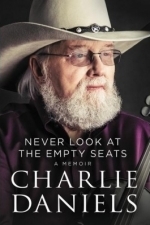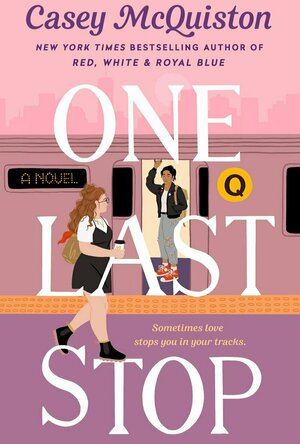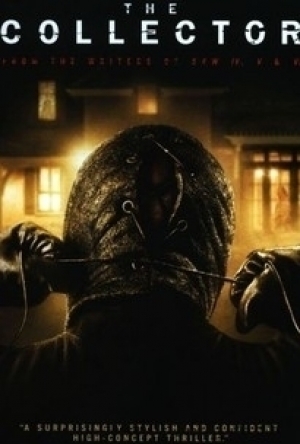
Silent Landscape at Gallipoli: The Battlefields of the Dardanelles, One Hundred Years on
Book
In our first book, we explored the impact of the fighting on the landscape of the Western Front -...
Kristy H (1252 KP) rated One Last Stop in Books
Jun 3, 2021
"Truth is, when you spend your whole life alone, it's incredibly appealing to move somewhere big enough to get lost in, where being alone looks like a choice."
I've put off writing this review because it's hard to see how I can do McQuiston's beautiful romance any justice. This book is such a romantic, sexy, and heartwarming read. August is an excellent character. She's spent most of her life in her uncle's shadow, working with her mother to try to solve his missing person's case. August eventually declared herself done--done searching, done with mysteries. But then this beautiful woman appears on the subway, and she offers the biggest mystery of all to August. Why is Jane stuck on the subway and how can August help?
"And she can't believe Jane had the nerve, the audacity, to become the one thing August can't resist: a mystery."
McQuiston gives us the most amazing, diverse queer novel one could ever wish for. August is bi and Jane basically every lesbian's dream. It's impossible not to fall in love with this gorgeous Asian subway vision. Even better, through Jane and other events, it's a tribute to those who came before our generation. Jane was a (incredibly sexy) activist / riot girl in the 1970s, yet is shocked that you can typically be openly gay on the subway now. She comes to everyone's defense there. She's amazing. As for August's roommates, they are beautiful and diverse, including trans and gay characters, with the lovely Myla taking care of the group. There are several drag queens given legitimate, true storylines. To say how meaningful this is to the queer community--it's hard to even explain. All of these characters--roommates Myla, her boyfriend, Niko, and Wes; neighbor Isaiah; coworkers Lucie and Winfield--are real and treated with care. They are funny, flawed, and create the most amazing found family ever.
"Jane doesn't age. She's magnetic and charming and gorgeous. She... kind of lives underground."
As for August and Jane, this is a romance for the ages. This book is swoony and sexy. It will make you laugh; it will make you cry. McQuiston has written a lesbian character for us lesbians to ogle for years to come, and a romance to stack all other romances against. It's funny and heartwarming. There's magic and mystery. There's pancakes. It's a beautiful ode to New York City, the subway, and falling in love. There's seriously nothing not to love.
So yes, I loved this book. I love McQuiston's way with words--the humor, the romance, the way she allows the queer community to have meaningful love stories in our world. This book is flowing with passion, with beauty, and magic. 4.5+ stars.

Contacts Sync for Google Gmail
Utilities and Productivity
App
••• SYNCS IPHONE WITH GOOGLE! ••• SYNCS GROUPS! ••• #1 IN DOWNLOADS & REVIEWS FOR...

StockMarkets for iPad - RT Stocks, News & Data
Finance and News
App
All your financial market information needs covered in one innovative app. Get access to free live...
Lottie disney bookworm (1056 KP) rated So This is Love in Books
May 16, 2020
‘So This is Love’ is the latest in the Disney Twisted Tale series and has been eagerly awaited by yours truly. The latest novel, by Elizabeth Lim (who also wrote the Mulan inspired tale ‘Reflection’) explores what would happen to the classic Cinderella tale if Cinders did not try on the glass slipper for the Grand Duke and scamper off towards her happily ever after. How would Cinderella fare if a dramatic stand off resulted in the remaining slipper shattering into a million pieces?
However, it is not, as you may suspect, Lady Tremaine who smashes the second glass slipper but Cinders herself. Lim’s Cinderella has her head firmly on her shoulders and is all too aware what the power of possessing this shoe may mean to herself, the Prince and the kingdom if it fell into the greedy hands of her relatives. Thus, in an act of bravery, she destroys her ticket to a happily ever after and faces the wrath of her stepmother in the process.
This is the first point in the twisted tale where we see a completely different Cinderella than we have ever seen before. After a dramatic turn of events Cinderella leaves her family home for good and finds herself at risk of a life living on the streets. However, Elizabeth Lim has not abandoned all aspects of a fairy tale: a chance encounter and a new friend present Cinders with the opportunity to find work within the palace where she once danced the night away.
In my opinion, the traditional Cinderella would go running straight to the Prince, explain her story, rely on her beautiful face and live happily ever after. Thankfully for the realists amongst us, our twisted tale Cinderella agonises over the possibility that the Prince is more in love with the idea of the “runaway princess”: she decides that their relationship would never work and that she should focus on her career and creating an independent life for herself.
This was such a refreshing character trait: I loved the fact that, although Elizabeth Lim did not change the time period of the novel, she modernised the main character into a young woman who does not need rescuing. Quite the opposite, as Cinderella soon finds herself witnessing corruption within the palace: can this Disney Princess become a hero and save the kingdom?
Lim’s Cinderella is truly a modern role model: she is resilient, sometimes stubborn but altogether kind and most importantly, she faces her fears despite overwhelming periods of anxiety in some of the most emotive and beautifully written pieces I have read in a long time.
In an Instagram post to Elizabeth Lim (@elimpix) I told her that this Cinderella is the version I would prefer my boys to chase after. However, on reflection that isn’t true. This Cinderella doesn’t deserve to be chased and hunted down in order to fit into a pretty shoe. This Cinderella is a partner in every aspect: working for the good of the kingdom and a ruler in her own right. This is the Cinderella I would want my boys to be worthy of.

Never Look at the Empty Seats: A Memoir
Book
A tale of hard work, musical discovery, and faith, Charlie Daniels’s journey has been one of a...
Music biography

Racing Rivals
Games and Sports
App
MILLISECONDS MATTER Jump behind the wheel and risk your ride as you challenge drivers around the...
Chris Sawin (602 KP) rated The Collector (2009) in Movies
Jun 22, 2019
The Collector is a film that is somewhat hurt by its own hype. It's written by Patrick Melton and Marcus Dunstan (who also directs), the writing team who penned the last three Saw films (including part VI). News broke right before its release that the film was almost a prequel to Saw. In the horror community, being a part of the Saw franchise is a rather large achievement. Even if you're not a fan of the franchise, it's hard to deny how well the Saw films do at the box office as their gross revenue is sometimes up to ten times what the film's budget was. The down side is that The Collector seems to make this point blatantly obvious. The film gives off a sense of deja vu throughout its entire duration. The Collector's traps are very reminiscent of Jigsaw's traps, at least in the way they're set up (reverse bear trap in Saw compared to the bear trap scene in The Collector). The Collector also looks and feels like a Saw film. The quick edits that a lot of people expressed their dislike for in Saw are used more often than not in The Collector. Grainy and high contrast filters along with those quick edits make it a bit hard to distinguish what events are actually occurring on screen at times. The first ten minutes or so of the film feel like an extended music video. These qualities don't necessarily make the film bad, but a film that's advertised as being original shouldn't have so much in common with a well distinguished franchise in the same genre; let alone when some of the same people are involved. Something that may have been easily averted if the marketing campaign didn't throw that fact in the public's face.
With all that being said, the film still has enough originality going for it to bring in horror fans. While the film does have its flaws (the main one being, how'd The Collector have time to set up all these traps?), they actually don't take away from the overall enjoyment for the film. What The Collector collects is rather interesting and even with its similarities to Saw, it's an original horror film that isn't a remake. Something we don't see a lot of anymore. What also might make or break the deal for horror fans seeing this film is that it doesn't shy away from blood and guts. The bear trap sequence alone is rather gruesome, but you do get to see some intestines make a cameo. So this definitely isn't for the squeamish. The film did leave a few open-ended questions, but they don't seem to be negative. The most memorable one is more of a sense of wondering why a certain character did a certain act rather than it being a glaring mistake. If this gets turned into a franchise (which depending on its reception, it just might), we'll probably get answers in the sequel(s). The Collector also seemed to establish a bit of tension at times, while the closing moments of the film were similar to a seesaw. The events that unfold seem to be going in one direction, but then quickly shift and go in another direction.
TV spots are saying things like, "Horror has a new icon," and that The Collector is the best horror film to come out in years. While the latter could be debated, the first part of that statement could very well be true. I, personally, wouldn't mind seeing more of The Collector as I like the idea and the character. The film as a whole, however, may have let its influences shine brighter than its original aspects. In retrospect, The Collector is an entertaining horror film composed of a decent antagonist, standard acting, an original storyline, and a few buckets of gore.
Purple Phoenix Games (2266 KP) rated Starlight Stage in Tabletop Games
Jul 25, 2019
DISCLAIMER: I do not intend to cover every single rule included in the rule book, but will describe the overall game flow and major rule set so that our readers may get a sense of how the game plays. For more in depth rules, you may purchase a copy from the publisher directly or from your FLGS. -T
Starlight Stage is a deck building, card drafting, and set collection game with a very unique theme and art style. As with all deck builders, players start with a hand of beginner cards. In this case, all players are dealt the same hand of starter idol, model, and actress cards. These are collectively called “Idols,” which is confusing, but I will address that in my summary. Essentially, each different type of idol provides you with a different type of currency/energy/power/resource to use when buying or drafting newer, more powerful cards.
On your turn you MAY flip over a card from one of the three decks available – Idol, Fame, or Event cards. Then you play cards from your hand in order to acquire more cards from the offer rows. Typically, you may only use one idol card per purchase, unless you are purchasing an Event card – you may send more than one idol to an Event. If there are no cards that you want, or that you can afford to purchase, you may “take a lesson,” by grabbing a resource token.
Tired of using just the starter idol cards all the time? Idols may reinvent themselves to become stronger. You do this by exchanging your starter (or upgraded) idol card and adding supporting cards and tokens to purchase a stronger idol card. These will typically provide more currency used to purchase more and better cards from the offer rows as well as providing more end game VPs. Example (shown below): exchange your starting Model idol card (blue diamond) plus several other supporting cards and tokens to transform your current Model into Super Idol Saori Tenkawa, who now provides you with one of each resource each time she is played.
Play continues until the Fame deck runs out, and points from cards are tallied to determine the winner.
Components: This game is a ton of cards and some resource tokens. The cards are great quality and will hold up well to repeated use, but super fans of the game may want to sleeve them, as the cards will be handled quite a bit. The tokens are typical cardboard chits and feature the diamond, heart, or music note symbols that are used throughout the game. Overall, production quality is pretty good.
So here’s the rub. When I pulled this out to play with Josh and Laura, we were immediately impacted by the art on the cards. When I started to explain the game mechanics and flow, Laura just COULD NOT contain her giggles as I tried to tactfully cover how to make your girls do jobs and attend events so that they can later upgrade themselves. I have to admit, the theme is not one I am accustomed to nor one that I can really get behind. I understand I come from a different culture background than that which is depicted in this game, but the theme is a definite detraction for us. Similarly, the art on the cards ranges from cute and uniquely anime to outright demeaning and near softcore hentai (there is no real NSFW artwork on the cards, but I certainly will not be playing this with my son until he’s at least 18). The idea of employing only young females and assigning them to different jobs to gain more fame or sending them to photo shoot events in skimpy clothing is just not very PC and not very 21st Century American. Again, I cannot stress enough that I do understand where this game comes from and the intended audience, but that intended audience is certainly not a group of highly inclusive, mostly minority, LGBTQIA member and allies, gender equal, 30-something board game enthusiasts and reviewers.
That said, the game itself can provide an interesting play session, but I highly recommend only playing with a specific group of people that you know will tolerate its suggestive art and overtones. For us at Purple Phoenix Games, we suggest Starlight Stage consider reinventing itself with a different theme. Also, I think some alternate terminology could be used for the Idol deck of cards that contain Idol, Model, and Actress cards. A minor quip, but it should be stated. Perhaps with some “Americanizing,” or at least having it be more PC, it would then overcome its 6/18 score and be invited to Hollywood with Simon Cowell.




